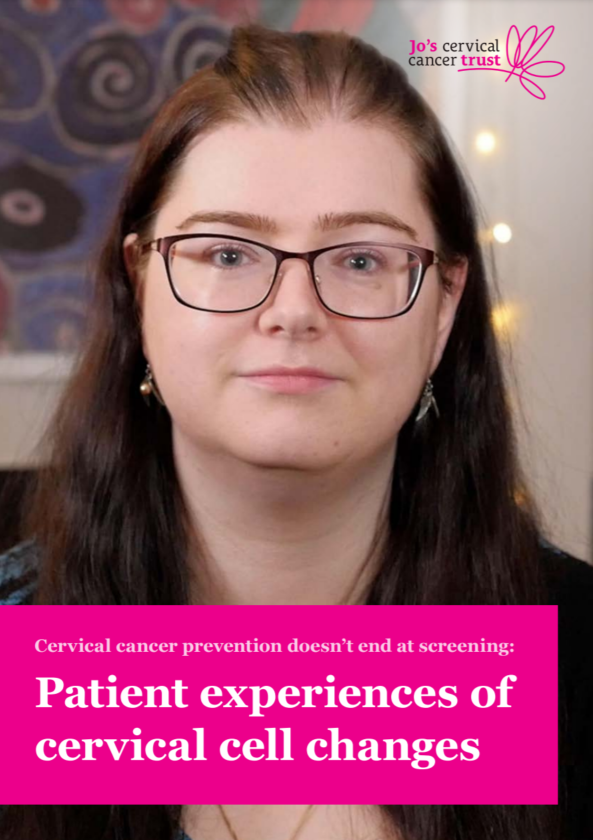Title
Cervical cancer prevention doesn’t end at screening: Patient experiences of cervical cell changes
Last modified: 4 June 2025, 12:58
 Our latest piece of research, “Cervical cancer prevention doesn’t end at screening”, examines the experiences of patients who have had cervical cell changes.
Our latest piece of research, “Cervical cancer prevention doesn’t end at screening”, examines the experiences of patients who have had cervical cell changes.
Each year, around 220,000 women and people with a cervix are diagnoses with cervical cell changes following their routine cervical screening. These cells are not cancerous, but they have the potential to develop into cervical cancer if they are not monitored or treated appropriately. Treatment given to prevent the development of cervical cancer is highly effective, with a success rate of around 90%. This makes colposcopy examinations and cell changes treatment a crucial aspect of cervical cancer prevention.
However, our survey of over 1000 women and people with a cervix found that many experienced anxiety, confusion, shame, and unexpected side effects as a result of their diagnosis and treatment.
Charlotte shares her experience of having cervical cell changes and treatment
We know those who deliver screening and colposcopy services are working to provide the best patient experience possible, currently under incredibly difficult circumstances, but more needs to be done to reduce some of the variations in care experienced following cervical cell changes.
Our work aims to provide greater insight into the experiences a diagnosis can bring and identify where further support, information, or research is needed.
Our recommendations
- Undertake further research into patient experience of colposcopy and cell changes: The research base in this area is small. There is a need for large scale, longitudinal studies into the experiences of patients following a cell changes diagnosis
- Increase the prominence of patient experience and subsequent good practice in colposcopy education and guidance: There are limited resources highlighting the different patient experiences, especially the longer term impacts patients may experience
- Collaboration between national bodies, commissioners and providers to identify how to maximise appointment times and reduce variation in care: Experiences of colposcopy, from invitation through to follow up after treatment and support provided, can vary between hospital and colposcopy team. Reducing this variation and supporting services by increasing the ability to maximise time in appointments is needed
- Greater recognition of fears around pregnancy and embedded support for those at higher risk: Most patients attending colposcopy and having treatment will not have an increased risk of pre-term birth, yet anxieties among this cohort are high, with some fears developing or increasing long after treatment has finished
- Better understanding of HPV, cervical screening results and colposcopy: Much has been done to encourage conversations about cervical screening, to support attendance and reduce stigmas and barriers. However, cervical cancer prevention does not stop at screening. Ensuring women and people with a cervix are prepared for different outcomes and have the support they need is essential to reduce some of the anxieties covered in this report.
